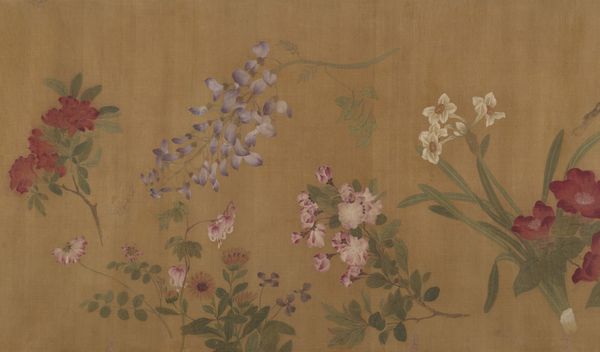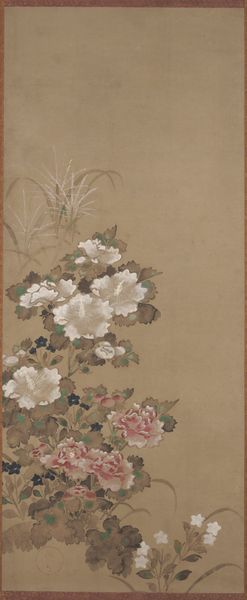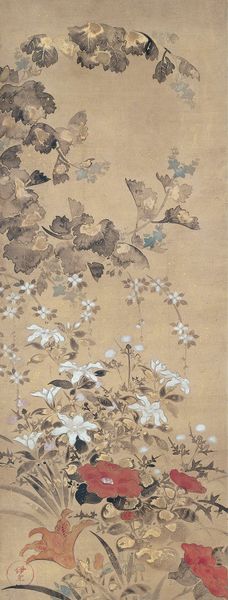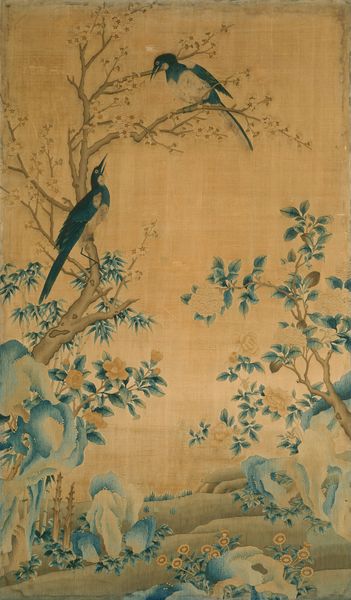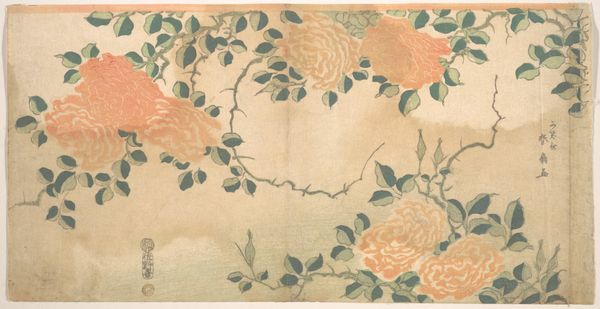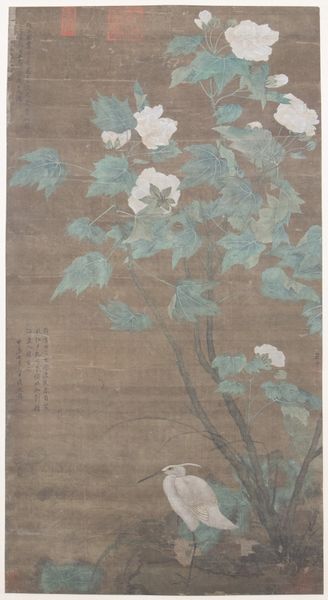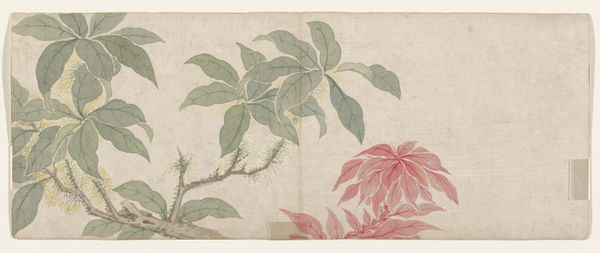
painting, watercolor, ink
#
organic
#
water colours
#
painting
#
asian-art
#
watercolor
#
ink
#
line
#
watercolor
Dimensions: Image: 9 15/16 × 79 5/8 in. (25.2 × 202.2 cm)
Copyright: Public Domain
Editor: So, here we have "Yellow Roses and Bees, Pink Roses and Wasps," attributed to an anonymous artist, though spanning from 1644 to 1911. It's a watercolor and ink on silk. The delicacy of the lines makes me think about ephemerality. What catches your eye? Curator: My focus goes immediately to the materiality. Silk as a ground isn't simply a surface, it speaks to trade routes, luxury, and the laborious process of its production. How does that labor contrast with the delicate, almost fleeting imagery of roses and insects? Editor: That's a really interesting angle! I was focused on the natural imagery, but thinking about the silk itself gives it so much more context. Does the presence of the insects have symbolic meaning connected to labor or materialism in this era? Curator: Absolutely. Think about the role of insects in the ecosystem—they pollinate, they consume, they transform. They're active agents, much like the artisans who produced the materials for the painting itself. Consider how this resonates with notions of consumption, creation, and decay within a society structured by class. Does that shift how you view the “natural” elements depicted? Editor: Yes, it does! I initially saw just beauty, but now I'm also thinking about how even these elements are shaped by material realities and human intervention. It adds a layer of complexity to something seemingly straightforward. Curator: Precisely! The painting encourages us to reflect on how these supposedly 'natural' subjects and materials are always entangled with complex socioeconomic systems. Editor: So it’s less about what's depicted, and more about how it's made and what that says about the broader world at the time? Thanks. Curator: Indeed, it is through investigating the object as a commodity, as well as an image, that meaning emerges. I think I'll start noticing the labor involved more attentively from now on.
Comments
No comments
Be the first to comment and join the conversation on the ultimate creative platform.

